Cities , 2001
WISHING WALL
WISHING WALL (Cities) 1998- 2001
Paper, invisible ink, 500 holes, wall.
ANNET GELINK GALLERY, AMSTERDAM: 75 WISHES
SERRE DI RAPOLANO, ITALY: 452 WISHES
FRI ART, FRIBOURG, SWITZERLAND: 161 WISHES
SONSBEEK PARK, ARNHEM, THE NETHERLANDS: 250 WISHES
GHENT, BELGIUM: 625 WISHES
The Wishing Wall series started with Murmur in 1998, when Mario Peroni invited Alicia Framis to make a piece for the Serre di Rapolano, for a show called ‘Indoors’. The idea was to make an art space as a house or a living space. There were 13 artists working in the building. ‘I decided to make holes in the wall, because this building was from the Mussolini era: the townspeople were slightly ashamed about this building, but at the same time they needed an art venue,’ Framis explains. ‘The act of making holes in the wall was a performance for me, without public. But one night I decided that this performance needed to become a positive act and something that could help to change the history of the building or the perception of it. I told Mario about my desire to make a wall of wishes, where the townspeople could write down their wishes and feel good after our exhibition, as this building would preserve their wishes.
I like the idea that work by other contemporary artists is now being shown on the Murmur wall, but it still contains the wishes of the people from this small town.’
Jan Hoet and Nicolas Bourriaud then showed the work elsewhere, once again as an interactive piece. It was shown at Sonsbeek, in Ghent and at Fri Art in Fribourg. The piece’s dimensions changed, but the action and the meaning did not. It is the place where everybody can leave a personal wish, and the Mur (wall) then becomes the Murmur (whisper).
The piece is an interactive work that encourages people to react and participate: this is what makes the wall the Murmur. A simple wall becomes part of their lives, of their personal histories. Without the public and their interaction the piece has no meaning.
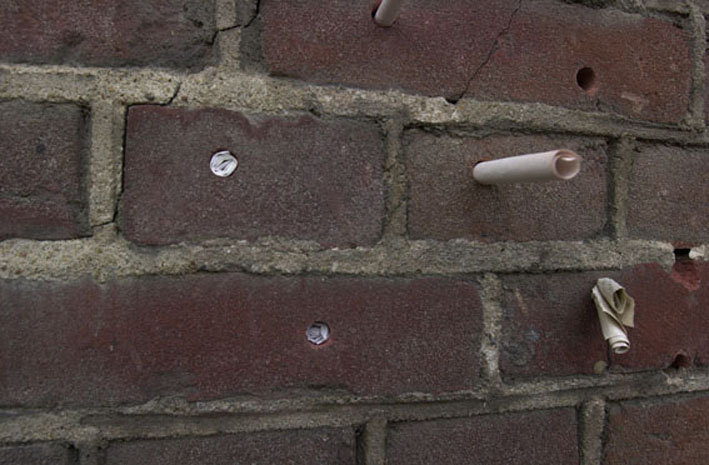
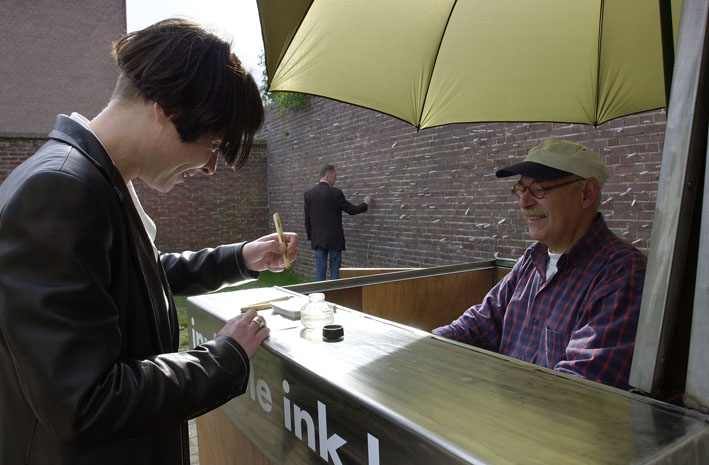
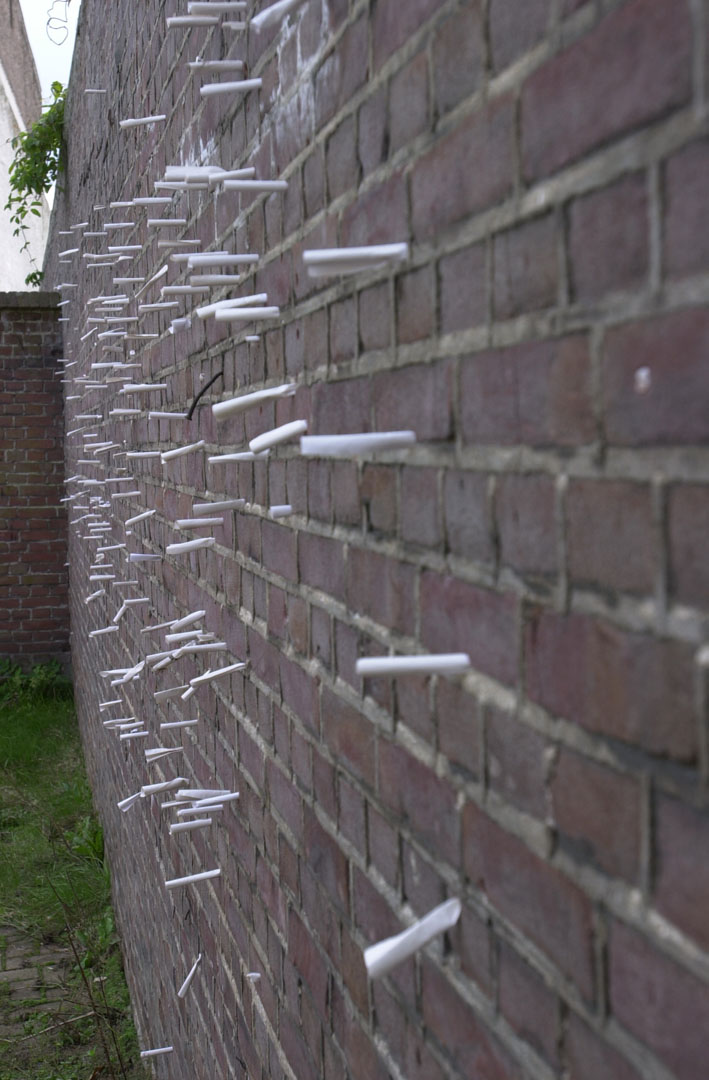
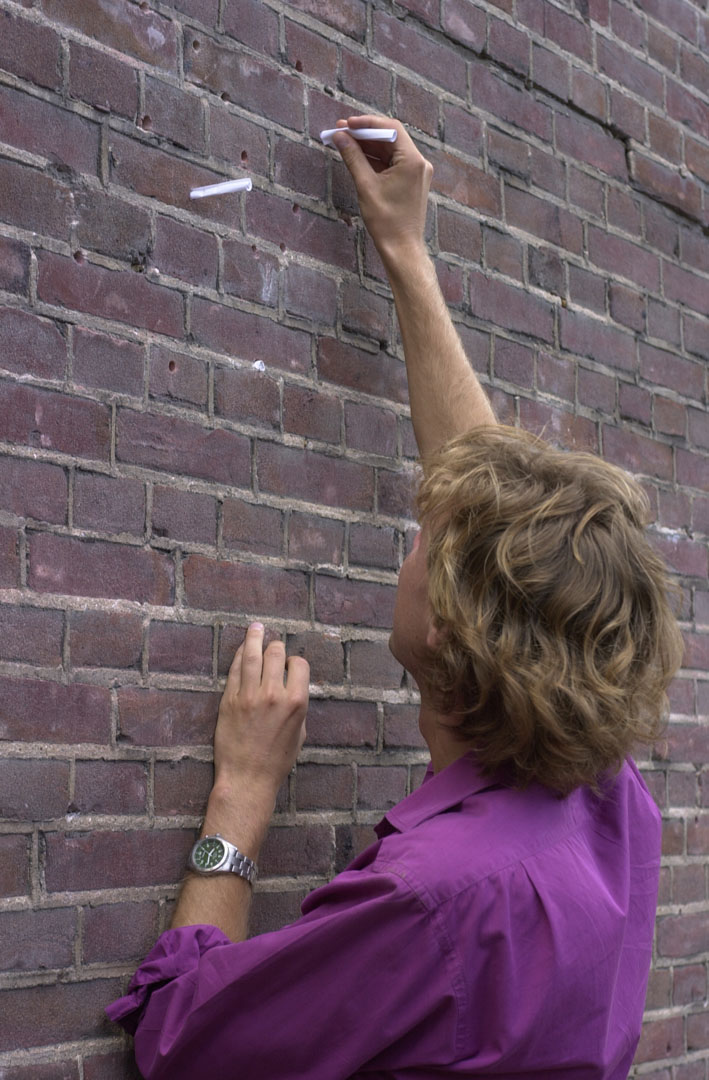
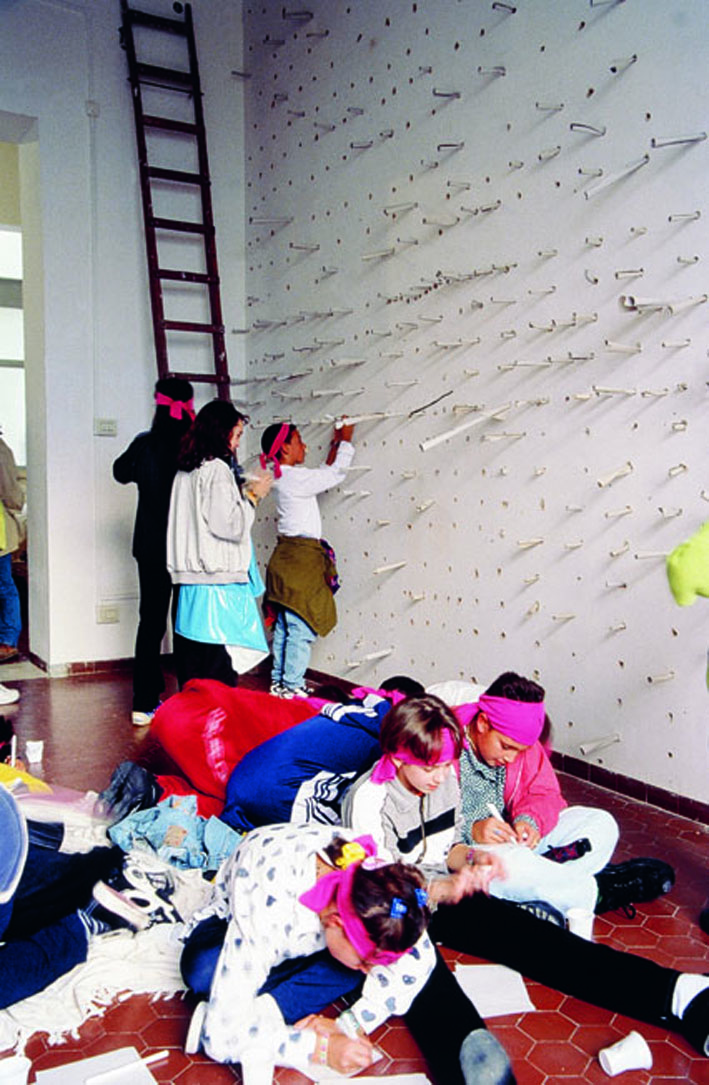
The Wishing Wall series started with Murmur in 1998, when Mario Peroni invited Alicia Framis to make a piece for the Serre di Rapolano, for a show called ‘Indoors’. The idea was to make an art space as a house or a living space. There were 13 artists working in the building. ‘I decided to make holes in the wall, because this building was from the Mussolini era: the townspeople were slightly ashamed about this building, but at the same time they needed an art venue,’ Framis explains. ‘The act of making holes in the wall was a performance for me, without public. But one night I decided that this performance needed to become a positive act and something that could help to change the history of the building or the perception of it. I told Mario about my desire to make a wall of wishes, where the townspeople could write down their wishes and feel good after our exhibition, as this building would preserve their wishes.
I like the idea that work by other contemporary artists is now being shown on the Murmur wall, but it still contains the wishes of the people from this small town.’
Jan Hoet and Nicolas Bourriaud then showed the work elsewhere, once again as an interactive piece. It was shown at Sonsbeek, in Ghent and at Fri Art in Fribourg. The piece’s dimensions changed, but the action and the meaning did not. It is the place where everybody can leave a personal wish, and the Mur (wall) then becomes the Murmur (whisper).
The piece is an interactive work that encourages people to react and participate: this is what makes the wall the Murmur. A simple wall becomes part of their lives, of their personal histories. Without the public and their interaction the piece has no meaning.